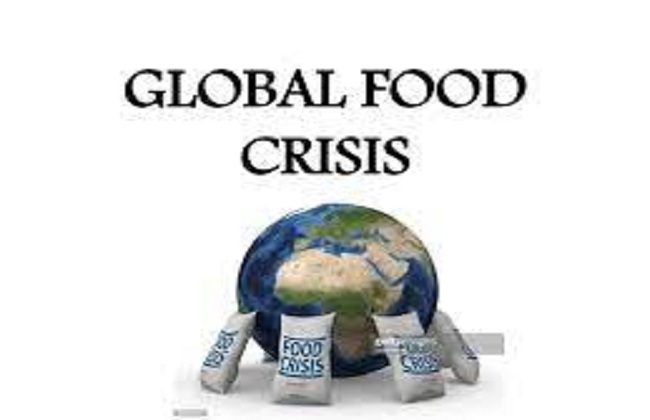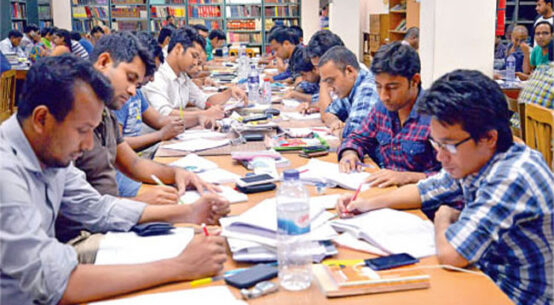
This is what happens when you starve. With no food, the body’s metabolism slows down to preserve energy for vital organs. Hungry and weak, people often become fatigued, irritable and confused.
The immune system loses strength. As they starve, people – especially children – are likelier to fall sick or die from diseases they may have otherwise resisted. Cholera, respiratory infections, malaria, dengue, and diphtheria kill more people in famines than starvation itself.
For the lucky (or unlucky?) ones who escape disease but still have nothing to eat, their organs will begin to wither and then fail. Eventually, the body starts to devour its own muscles, including the heart.
Many will experience hallucinations and convulsions before, finally, the heart stops. It is a terrible, agonizing, and humiliating death. It is nearly as terrible to watch – as I know from my own experience over nearly 40 years in Ethiopia, Somalia, Yemen and elsewhere.
When I was young, many people—including researchers and scientists—thought famine was a permanent feature of the human experience. Famines are shocking, scarring events, the most extreme form of humanitarian disaster. They involve large-scale loss of life with a slow but visible prelude, a tipping point beyond which prevention is no longer possible, and then an explosion.
As an undergraduate, I went to Nobel-prize-winner Amartya Sen’s lectures on poverty and famine, and I wrote a masters’ dissertation on the use of food grain prices as an early warning of food crises.
For many of my friends and me, the Ethiopia famine of 1984 was a lightbulb moment. In previous eras, famine was a feature of the fragility of agriculture against the ever-increasing pressure of higher populations.
In 1968, Paul Ehrlich published The Population Bomb, in which he predicted that by the 1980s, four billion people would have been killed by famines. His opening sentences set the scene: “The battle to feed humanity is over. In the 1970s, the world will undergo famines in which hundreds of millions of people are going to starve to death.”
Ehrlich predicted that England would cease to exist by 2000 because the country would be consumed by hunger. Historical experience gave these dark warnings a degree of credence. Researchers think that famines may have taken more lives than war over the course of human history.
More than 120 million people are believed to have died in famines in the hundred years after 1870, a larger number even than those killed in that period’s uniquely bloody wars.
The doom mongers, though, were wrong. In fact, in the past 50 years, famine has become much rarer and much less lethal. So far this century, there has just been one real famine. That was in Somalia in 2011, when a quarter of a million people died.
Ehrlich and his ilk were wrong because they failed to see how the world was changing. Three main factors have combined to produce unprecedented advances in reducing large-scale loss of life through starvation over the last 50 years.
First was an exponential increase in agricultural output and productivity. Improvements in plant breeding, protection, storage, irrigation, harvesting, transporting, and marketing have contributed to a 300 percent increase in food grain production, using only 12 percent more agricultural land around the world.
The global spread in the use of nitrogen-based artificial fertiliser and the development through the Green Revolution of improved seed varieties for major crops explain most of the improvements.
Second, a spectacular reduction in global poverty has increased people’s ability to afford food. In the 60 years after 1960, the extreme poverty rate globally dropped from more than 50 percent of the total human population to less than 10 percent. In particular, the 25 years from 1990 to 2015 saw a reduction from 35 percent to less than 10 percent, even while the global population continued to grow dramatically.
So not only was there a lot more food available, but most people now had enough income to be able to buy it. Food security has been enhanced by the entitlements created by social safety net schemes established in dozens of the poorest countries over the past 20 years, including ones I have seen myself in countries including Ethiopia, Ghana, India, Kenya, Malawi, Pakistan, Uganda, Yemen, and Zambia.
Third, when famine does threaten, the response is now much more effective than it was 30 years ago. My first job was on the famine in Ethiopia in the mid-1980s. Then, the overwhelming focus of the relief effort was on food, water, and shelter. Now we understand that in a famine, starvation is not the main cause of death.
The real killers are those diseases that a healthy person can generally fight off but a starving one cannot. As a result, today’s famine responses include comprehensive immunisation programmes, primary healthcare, and nutrition interventions as well as food and clean water.
The result of all this scientific, technological, and economic progress is that modern-day famines are manmade – the result either of deliberate attempts to stave a population, or of wilful negligence.
That was true to a degree in the past: Mao Zedong’s Great Famine in China in the 1960s, generally believed to be the worst famine in history in terms of the total number of lives lost, arose largely from the authorities’ policy choices.
And the famine that some people claim took three million lives in North Korea in the mid-1990s—a repetition of which remains a risk, as I saw during a visit to Pyongyang and the south of the country in 2018—could have been forestalled had the regime been willing to accept the international help on offer.
Despite all the progress famine is now back. But so far in the 21st century, ignorant policy choices have not been what generated famine threats. Deliberate, concerted attempts to prevent aid reaching the starving, as part of the military or political strategy of states or armed groups, are now the only explanation for the failure to have eradicated famine from the human experience. In every single case of famine or near famine in the last ten years – including those I dealt with at the UN from 2017-21 – the fine line between, on the one hand, acute suffering and chronic hunger and, on the other, mass death through starvation and related causes, was policed by the men with guns and bombs. Pressure on them has meant the worst has been avoided.
The world now faces its most serious food crisis for many decades. It arises from the cumulative effects of a decade of spreading conflict, the repeated undermining by climate change of livelihoods based on increasingly volatile rainfall, and the economic crunch on the most vulnerable countries from the COVID pandemic.
And then on top of all that has come Putin’s invasion of Ukraine, disrupting global grain markets and taking the food exports of Russia and Ukraine – enough food for 400 million people – largely off the table this year.
The new global food crisis affects us all. Everyone going to a supermarket for weekly shopping is aware of prices rising. For most of us, the impact is manageable. Buying food is not the biggest call on our incomes. We can tighten our belts and adjust.
But for about 10% of the world’s population, mostly in the poorer countries of the Middle East (like Syria and Yemen) and sub-Saharan Africa, it’s different. Tens of millions of them are falling back into extreme poverty, where they barely have enough calories and nutrients to nourish their bodies properly and their children suffer stunting and life-long cognitive impairments.
However, it is the roughly 1% of the world’s population who faced acute hunger even before the Ukraine crisis, those who cannot survive at all without help from aid agencies, who will be the victims if today’s food crisis is allowed to deteriorate into multiple simultaneous famines.
They are mostly concentrated in relatively few countries, including in particular Afghanistan, Ethiopia, Somalia, South Sudan, Sudan, Yemen and parts of the Sahel. Millions may starve to death. That is what policy makers should be really focused on.
So, what can be done? Simultaneous actions are needed in four areas.
First, a real effort needs to be made to get more grain onto the market in the very short term. There is plenty of food to feed everyone this year. Diplomatic efforts, which have become increasingly visible over the last month, to find a way to access the grain silos in the Black Sea ports and export the 20 million tonnes of wheat they contain should be intensified.
They may not work; if they don’t, those holding large stocks of grain for strategic reserves should be prevailed upon to release a modest proportion of them. That would ease the market and take the edge off price increases.
Second, because it seems unlikely that the underlying causes of this year’s crisis will be solved quickly, reducing medium term reliance on Russia and Ukraine is now a practical necessity.
Farmers around the world need greater help and encouragement to plant more wheat, maize, sunflower and other food crops, as well as better access to inputs, above all seeds and fertiliser. Diversification in the fertiliser market, in which Russia and its allies are dominant, is a particular priority.
Third, many low-income countries which do not produce enough food for their populations but do have the administrative capacity and institutions to run effective safety net programmes are constrained from importing food by fiscal problems and indebtedness.
Macroeconomic management matters, but some accommodation from the shareholders of international financial institutions led by the World Bank and IMF is necessary in the current circumstances.
And fourth, and most important of all in the next weeks and months, a substantial increase in emergency humanitarian aid to populations in clear and present danger of mass starvation is essential.
The Biden administration and US Congress package agreed a package of $5 billion for this in May. That shows the way. Others, especially the UK and the EU, should follow suit. The G7 summit in Bavaria this month would be a good time to do that.
Mark Lowcock was appointed UN Under Secretary-General for Humanitarian Affairs and Emergency Relief Coordinator in May 2017 and served in that role until June 2021. He was previously Permanent Secretary of the United Kingdom’s Department for International Development.


